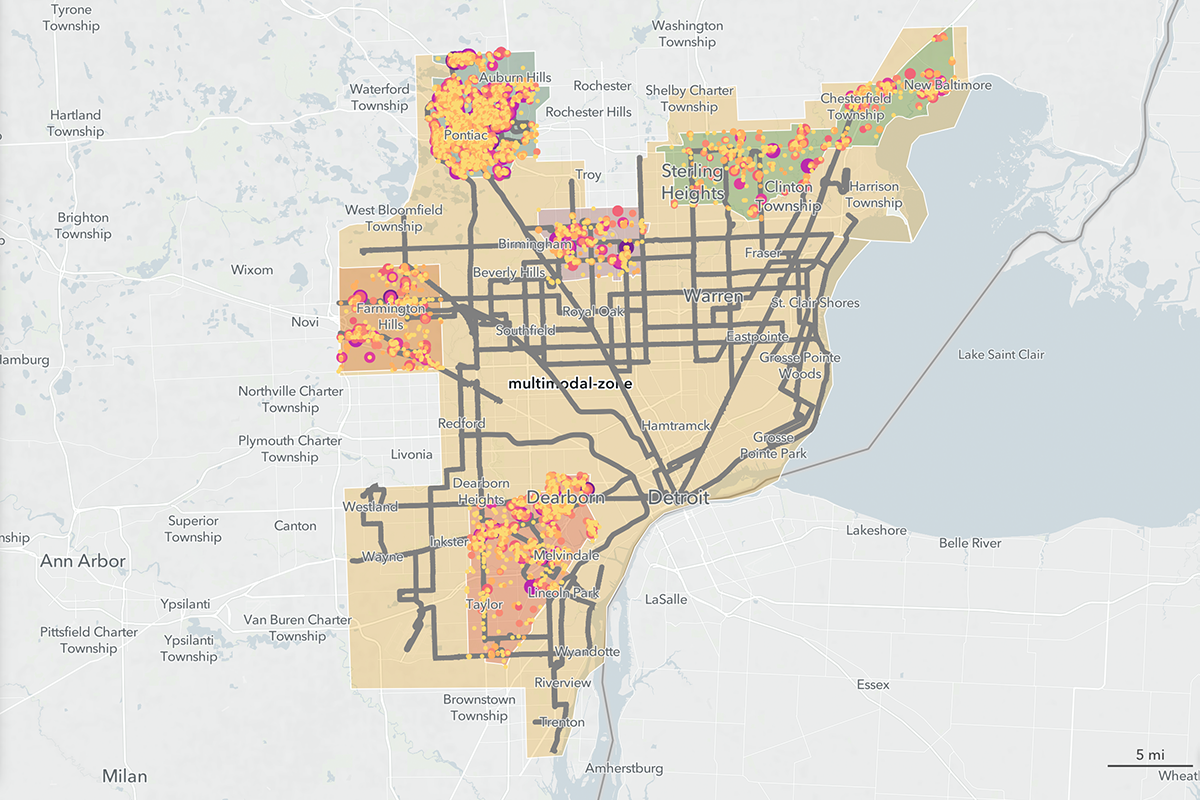Welcome to our Data-Driven Planning Lessons series , where we give you key takeaways on how cities are increasing transit accessibility by leveraging multiple types of data, including demographics, fixed-route ridership, on-demand mobility patterns, and beyond — all in one platform. Let’s get started.
The Detroit metro area had a daunting transit challenge despite a large suburban transit network. The existing fixed routes were not serving many residents due to significant first- and last-mile gaps. Only 2% of people in the coverage area of Suburban Mobility Authority for Regional Transportation (SMART) take transit to work, even though 11% of local residents are car-free, according to census data.
Bridging transit gaps for those who either can’t drive or don’t own cars became the agency’s major goal in 2021. "You can walk half a mile pretty comfortably to get to some transit stops, but if you need to go farther than that, it no longer becomes convenient for you to take FAST [suburban buses].” Robert Cramer, deputy general manager of SMART, explained.
Drag the centerline in the slider below to see how fixed routes and on-demand services complement one another.

Despite a sprawling fixed-route network in the Detroit metro area, it was not serving a sufficient number of residents. Transit within these four distinct service zones is difficult using existing fixed-route service, but on-demand travel patterns, visualized in Remix, show that SMART Flex has successfully filled these gaps.
And that’s where SMART Flex, an on-demand microtransit service, comes in. The agency identified four service zones where popular destinations are located but are not easily accessible on existing SMART bus routes, like Troy's Somerset Mall or Dearborn's Greenfield Village.

A recent ridership analysis confirmed how well Flex is complementing fixed-route services: about 12% of rides are connected to existing public transportation. And 70% of SMART Flex rides start or end in commercial districts or buildings that are not covered by fixed routes , expanding access across the region. Other top destinations include education centers, healthcare facilities, and outdoor recreation places.
Many transit planners often find it difficult to gather all the data they need for the planning work, especially when service information scatters in a number of different places. Remix’s all-in-one platform is designed to fix this: Users can easily pull fixed-route data, add it to the digital map and see how new mobility programs could interact with existing routes.
A number of built-in data layers — service frequency, vehicle numbers, operational costs, and Remix’s estimation of transit coverage — could help users evaluate the impact of existing fixed lines, and identify service gaps for better transit planning. Remix enables planners to include both fixed-route and on-demand services in the decision-making process, ultimately optimizing the options for the overall network.
This article is one of a series of transit planning stories featuring how cities are transforming transit deserts with a new solution:- Cities are transforming transit deserts with data-driven planning
- The key to successful transit planning: complement fixed routes
- In transit planning, on-demand is essential for low-density cities
- Filling the gaps in areas with limited or no transit options
- Microtransit fills in transit gaps to link this suburb to broader opportunities

Data Journalist




